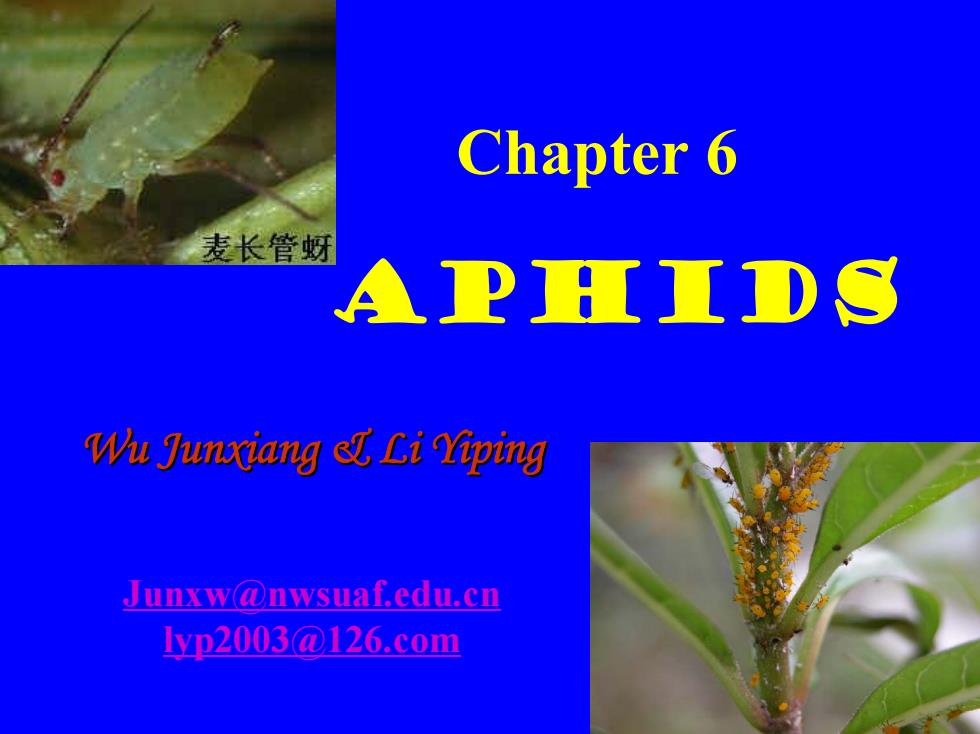
Chapter 6 麦长管蚜 APIHIDS Wu Junxiang eI Li Yiping Junxw@nwsuaf.edu.cn 1yp2003@126.com
Chapter 6 APHIDS Wu Junxiang Junxiang & Li Yiping Junxw@nwsuaf.edu.cn lyp2003@126.com
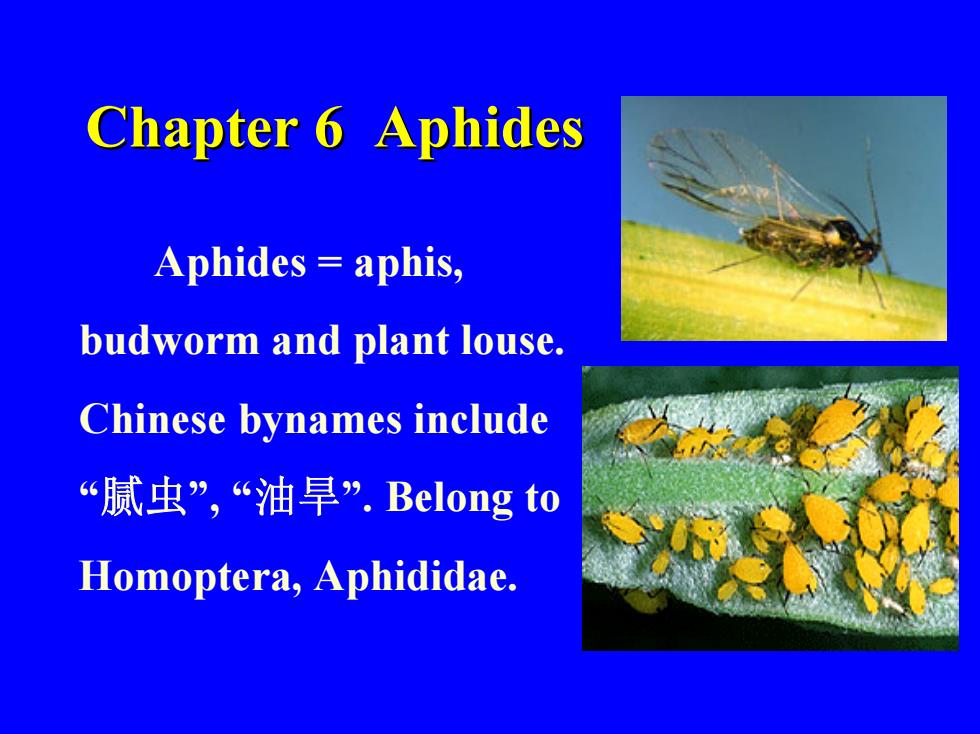
Chapter 6 Aphides Aphides aphis, budworm and plant louse. Chinese bynames include “腻虫”,“油旱”.Belong to Homoptera,Aphididae
Chapter 6 Aphides Chapter 6 Aphides Aphides = aphis, budworm and plant louse. Chinese bynames include “腻虫”, “油旱”. Belong to Homoptera, Aphididae
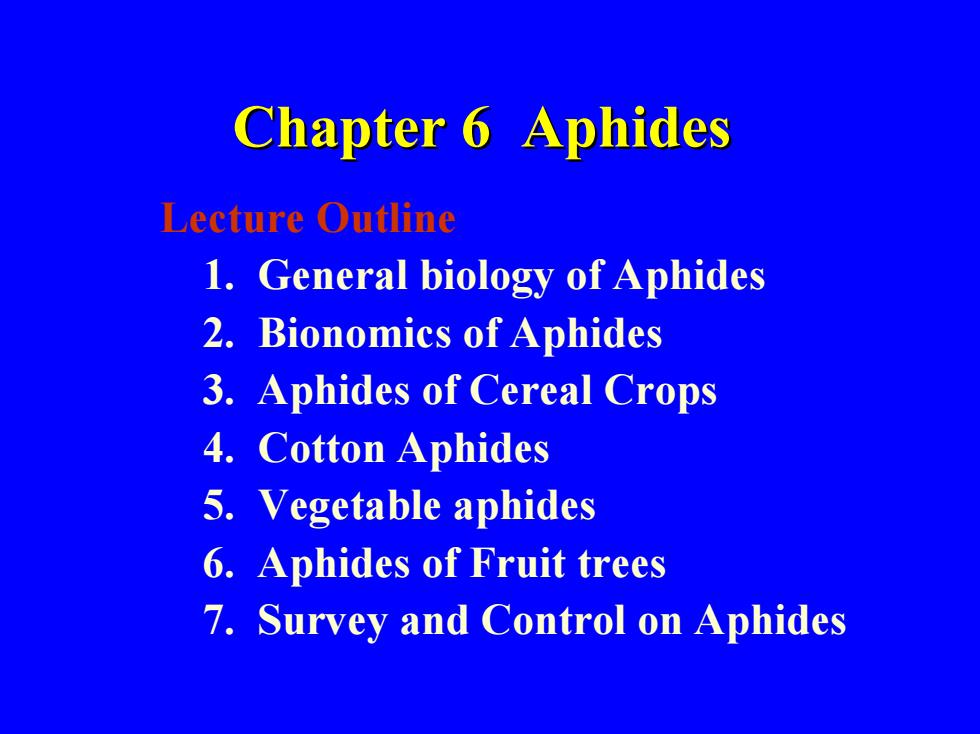
Chapter 6 Aphides Lecture Outline 1.General biology of Aphides 2.Bionomics of Aphides 3.Aphides of Cereal Crops 4.Cotton Aphides 5.Vegetable aphides 6.Aphides of Fruit trees 7.Survey and Control on Aphides
Lecture Outline 1. General biology of Aphides 2. Bionomics of Aphides 3. Aphides of Cereal Crops 4. Cotton Aphides 5. Vegetable aphides 6. Aphides of Fruit trees 7. Survey and Control on Aphides Chapter 6 Aphides Chapter 6 Aphides
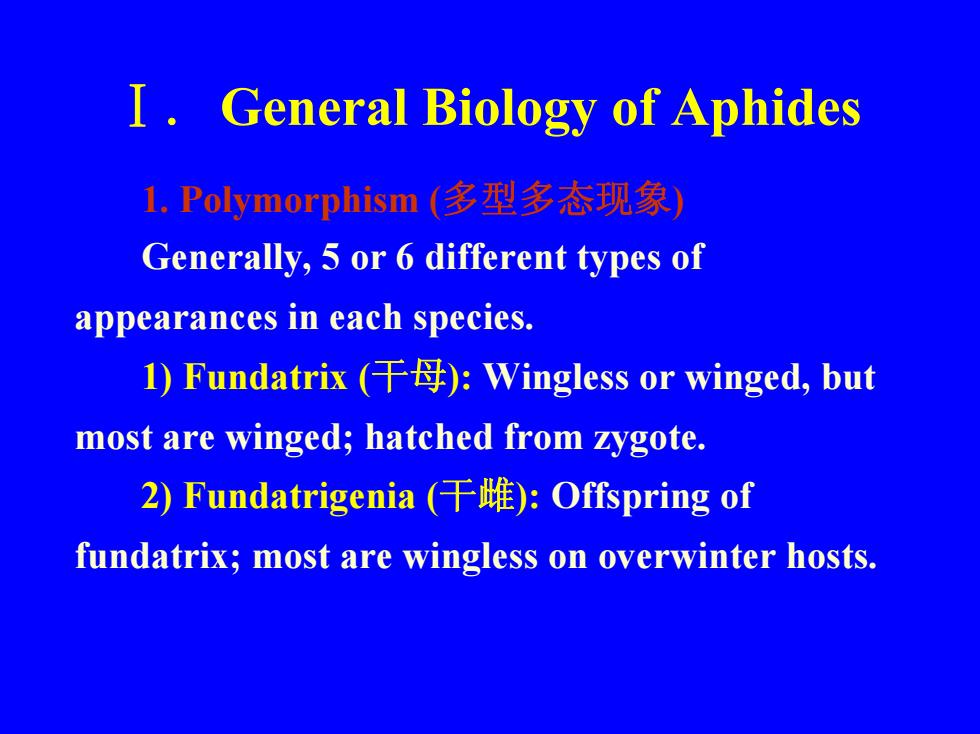
I General Biology of Aphides 1,Polymorphism(多型多态现象) Generally,5 or 6 different types of appearances in each species. l)Fundatrix(干母):Vingless or winged,but most are winged;hatched from zygote. 2)Fundatrigenia(干雌):Offspring of fundatrix;most are wingless on overwinter hosts
Ⅰ. General Biology of Aphides 1. Polymorphism (多型多态现象) Generally, 5 or 6 different types of appearances in each species. 1) Fundatrix (干母): Wingless or winged, but most are winged; hatched from zygote. 2) Fundatrigenia (干雌): Offspring of fundatrix; most are wingless on overwinter hosts
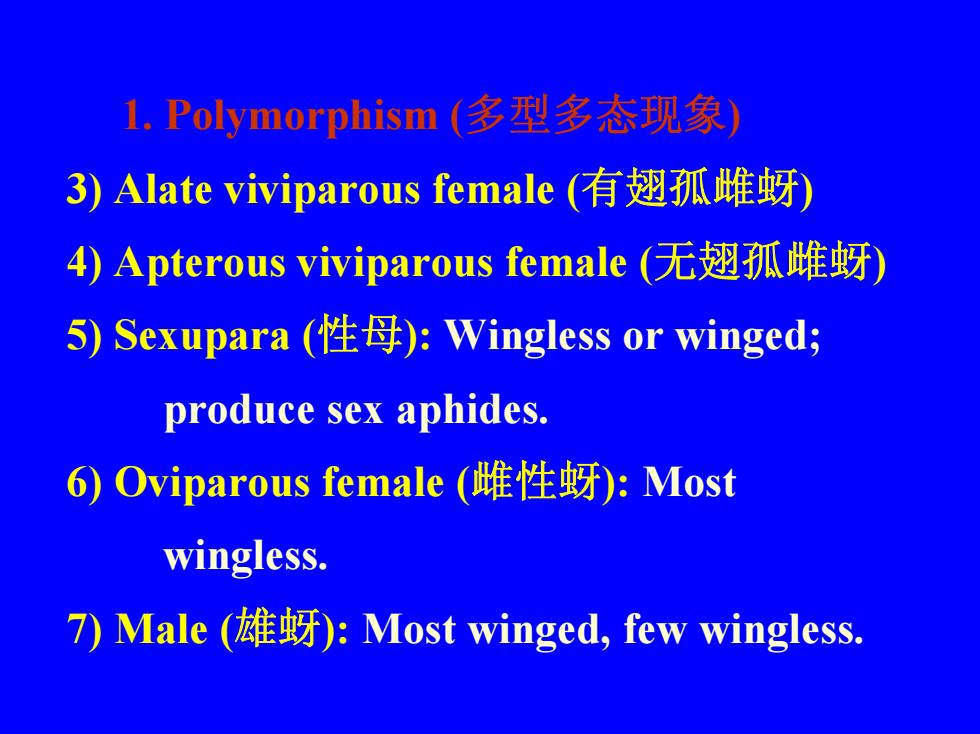
1.Polymorphism(多型多态现象) 3)Alate viviparous female(有翅孤雌蚜) 4)Apterous viviparous female(无翅孤雌蚜) 5)Sexupara(性母):Wingless or winged; produce sex aphides. 6)Oviparous female(雌性蚜):Most wingless. 7)Male(雄蚜):Most winged,.few wingless
1. Polymorphism (多型多态现象 ) 3) Alate viviparous female (有翅孤雌蚜 ) 4) Apterous viviparous female (无翅孤雌蚜 ) 5) Sexupara (性母): Wingless or winged; produce sex aphides. 6) Oviparous female (雌性蚜): Most wingless. 7) Male (雄蚜): Most winged, few wingless

2.Why winged aphides are produced 1)Climate Conditions(气候条件) 2)Host Nutrition(寄主营养) 3)Aphid Population Density(种群密度)
2. Why winged aphides are produced 1) Climate Conditions (气候条件) 2) Host Nutrition (寄主营养 ) 3) Aphid Population Density (种群密度 )

3.Types of Life Cycles(生活周期型 l)Anholocyclic Life Cycle(不全周期 Reproduction by parthenogenesis(孤雌 生殖)year round;no sex aphides. 2)Holocyclic life cycle(全周期) Reproduction by both parthenogenesis and gamogenesis(两性生殖)in a year cycle
3. Types of Life Cycles (生活周期型 ) 1) Anholocyclic Life Cycle (不全周期 ) Reproduction by parthenogenesis (孤雌 生殖) year round; no sex aphides. 2) Holocyclic life cycle (全周期 ) Reproduction by both parthenogenesis and gamogenesis (两性生殖) in a year cycle
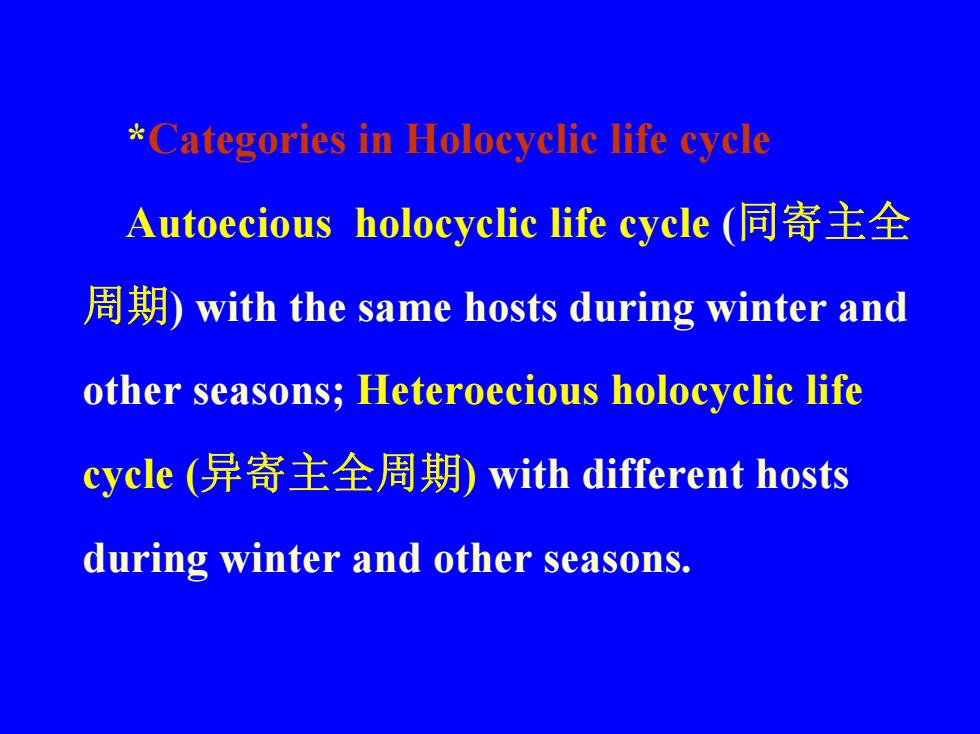
*Categories in Holocyclic life cycle Autoecious holocyclic life cycle(同寄主全 周期with the same hosts during winter and other seasons;Heteroecious holocyclic life cycle(异寄主全周期with different hosts during winter and other seasons
*Categories in Holocyclic life cycle Autoecious holocyclic life cycle (同寄主全 周期) with the same hosts during winter and other seasons; Heteroecious holocyclic life cycle (异寄主全周期) with different hosts during winter and other seasons

4.Damage 1)Plant Sap Sucking Aphids which do this are the most common and destructive of pest insects.A wide variety of economically important plants are attacked. Aphids feed by sucking sap from their hosts.Heavy infestations on some hosts may result in wilting.Young plants may have reduced or stunted growth
4. Damage 1) Plant Sap Sucking Aphids which do this are the most common and destructive of pest insects. A wide variety of economically important plants are attacked. Aphids feed by sucking sap from their hosts. Heavy infestations on some hosts may result in wilting. Young plants may have reduced or stunted growth
